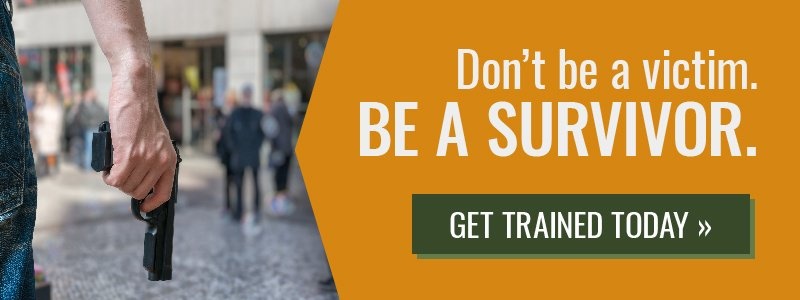 Rarely is there just one right way to respond in an emergency. Everyone reacts a little differently during a crisis, but through our years of experience in law enforcement and EMS, we've seen some of the same poor reactions repeated in various traumatic events.
Rarely is there just one right way to respond in an emergency. Everyone reacts a little differently during a crisis, but through our years of experience in law enforcement and EMS, we've seen some of the same poor reactions repeated in various traumatic events.
It's amazing the things our brains will tell us (or fail to tell us) to do when we're under stress. It's no wonder that people freeze up when they should fight, or that they run away when they're the only ones who can provide lifesaving medical care.
You can never truly be prepared for an active shooter event, but you can increase your likelihood of having an empowered response. Start by being aware of 5 of the most common mistakes people make under stress.
1. Remaining oblivious to the shooter's location
If you hear gunshots in your office or school, all you really know is that there is an active shooter present. Their location is undetermined, and that makes it difficult for you to determine what your next steps should be. If the shooter is right outside your classroom, then you should barricade the door and plan how to defend yourself with improvised weapons prior to finding an alternative exit. If the shooter is on the other side of the building, you may be able to safely exit the facility without being seen.
Are there cameras at your school, place of employment, or church? These could prove very helpful in determining a shooter's location if such an event were to occur.
2. Giving a poor description of the shooter
If you've seen the shooter, and you're calling 911, do your best to provide a clear description of the suspect. Are they husky or skinny? Man or woman? Include the following information in your description:
- Location. "They were on the second floor walking toward the west stairwell exit."
- If it's difficult to describe the shooter's location, at least describe where you are in relation to the shooter.
- Clothing. "They are wearing a navy hooded sweatshirt, sunglasses, and black jeans."
- Be aware that active shooters often arrive wearing a coat or another layer that gets removed over time, so don't assume someone else has already given a description of their attire as it is right now.
- Gender, race, height, weight/build, and any other prominent physical features. "He's a white male with a neck tattoo. Middle-age — maybe 40s. He's slender and looks to be at least 6 feet tall."
3. No plan for the suspect's weapon
Depending on the scenario, you may have the opportunity to take the weapon from the shooter. Once you do this successfully, what will you do next?
Many people's first instinct would be to run — just run until you find a police officer that you can give the gun to. But there is a serious problem with that response. If members of law enforcement, who are looking for the active shooter suspect, see you running toward them with a gun, they may think that you are the shooter. This puts you at unnecessary risk.
There are countless things that you can do with a suspect's weapon once you've acquired it. You have options — consider unloading it and sliding it out of reach, or even placing it into a trash can or other receptacle. Your priority is to ensure that the gunman is no longer a threat, and that you are not found holding the suspect weapon.
4. Hindering EMS when they arrive
EMTs are used to walking into emergencies and dealing with all kinds of victims — some are in shock; others are facing life-threatening injuries. Responding to active shooter events is extremely challenging, and many times civilians' reactions to traumatic events can make an already difficult situation almost unmanageable.
If you've taken on the role of first responder in an active shooter event, you'll eventually let EMS take over. When they arrive, do your best to assist them as needed. Provide them with any information you think they may need to know, and answer any questions they have for you. They may ask you to continue providing medical care temporarily, or they may put you an ambulance and take you to the hospital. Either way, do your best to help without getting in the way.
5. Failing to act
When we think of mistakes, most of us think of doing something incorrectly; we rarely think of mistakes resulting from inaction. But if you talk to a police officer or an EMT, they'll probably tell you that when it comes to emergency response, more mistakes are caused by failing to act than by taking action.
The biggest mistake you can make as a first responder is to not act.
Instead of worrying about doing the wrong thing, the important thing is to just do something. Maybe it's applying pressure to a severe bleeding wound, or perhaps it's barricading the door of your conference room with bookshelves. Whatever it is, you have a role to play, and it's not the role of a victim; it's the role of a leader and a survivor.
For more information on learning to respond in active shooter events, contact ProActive Response Group and schedule an Active Shooter Training Class for you, your workplace, school, industrial facility, or place of worship. Click on the banner below to reach us online!
.png?width=499&height=133&name=Logo-menu%20(1).png)



